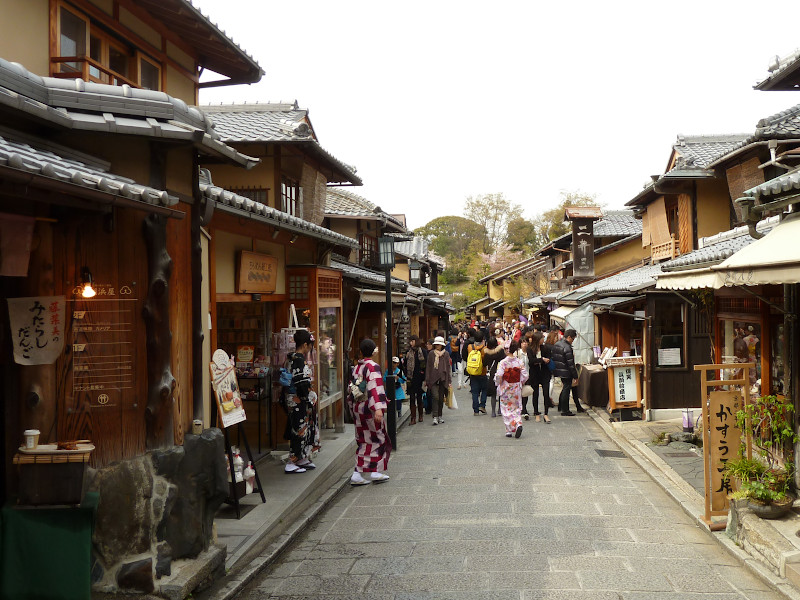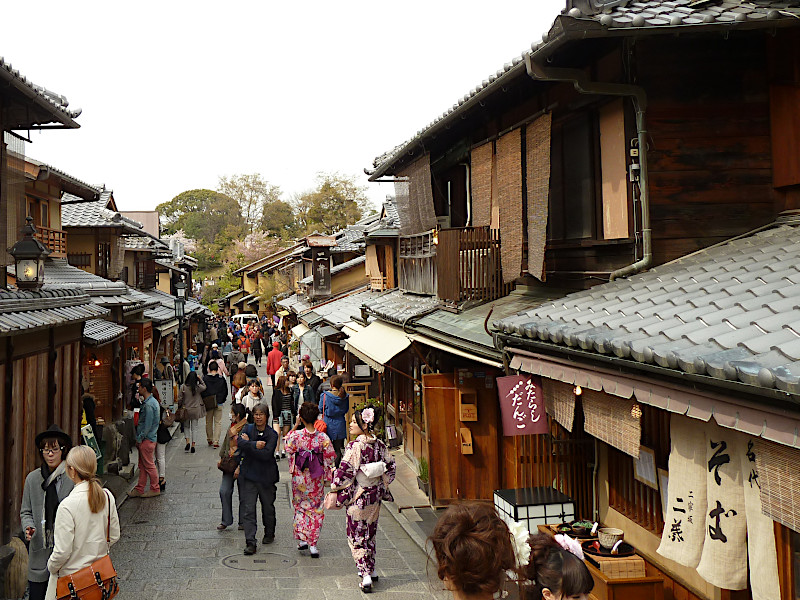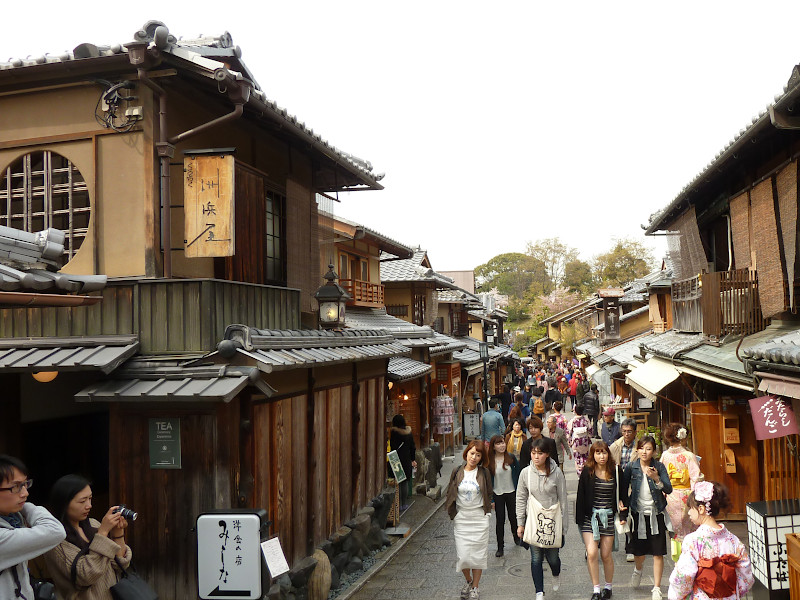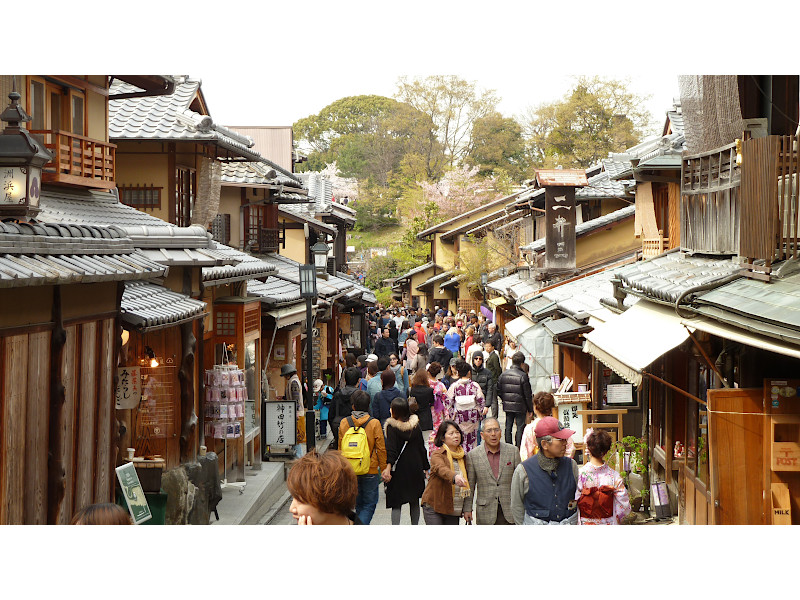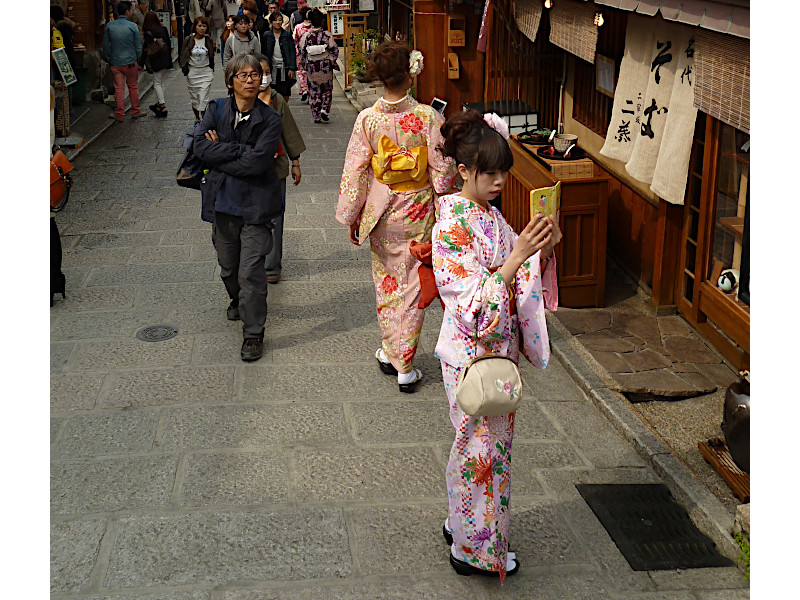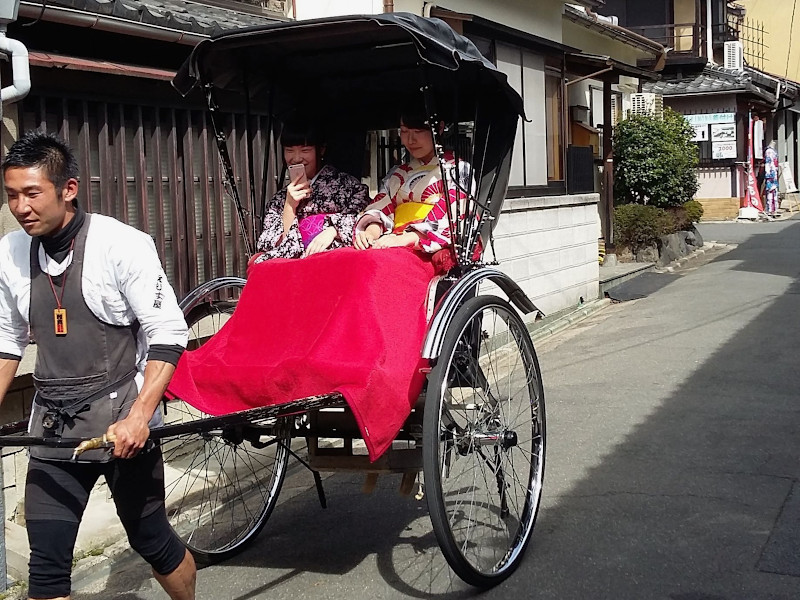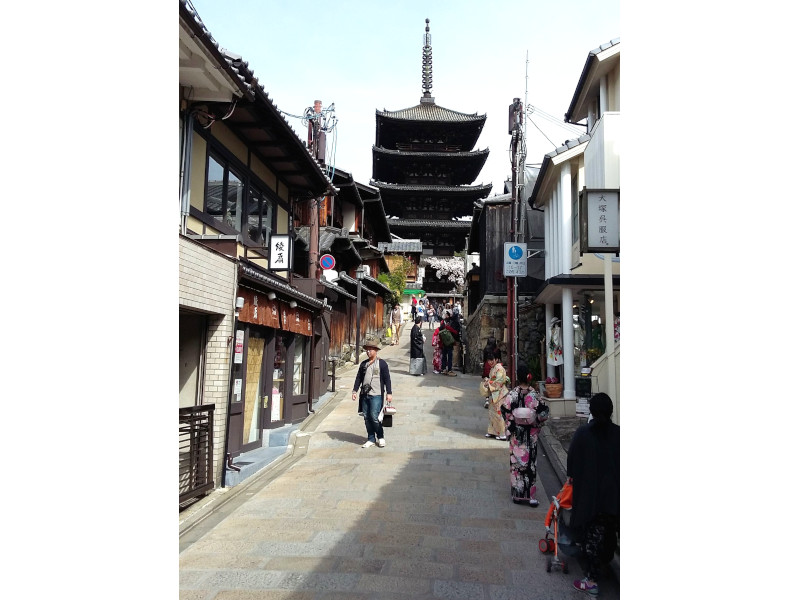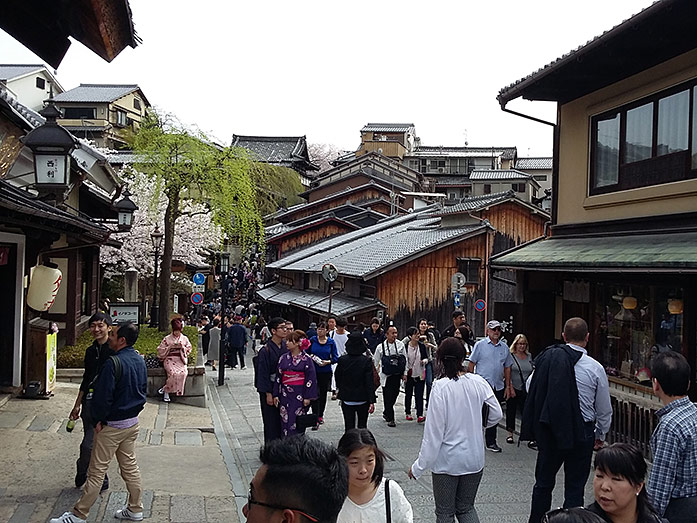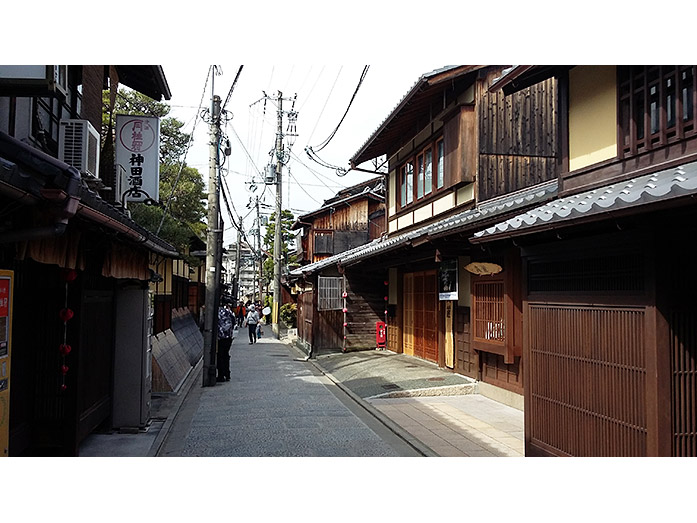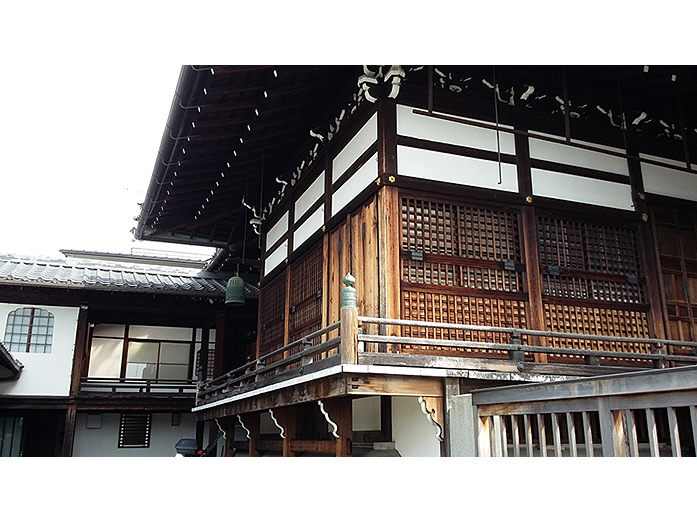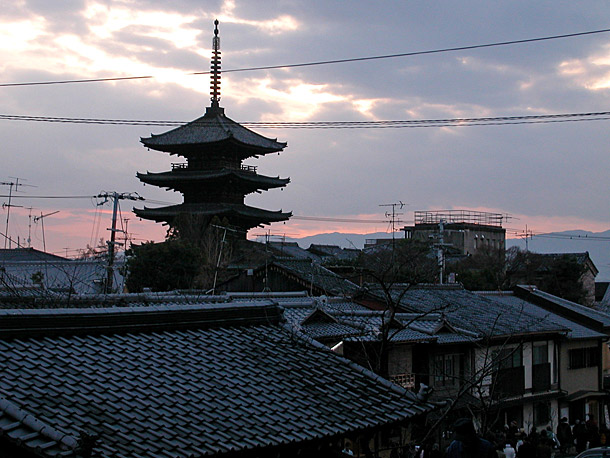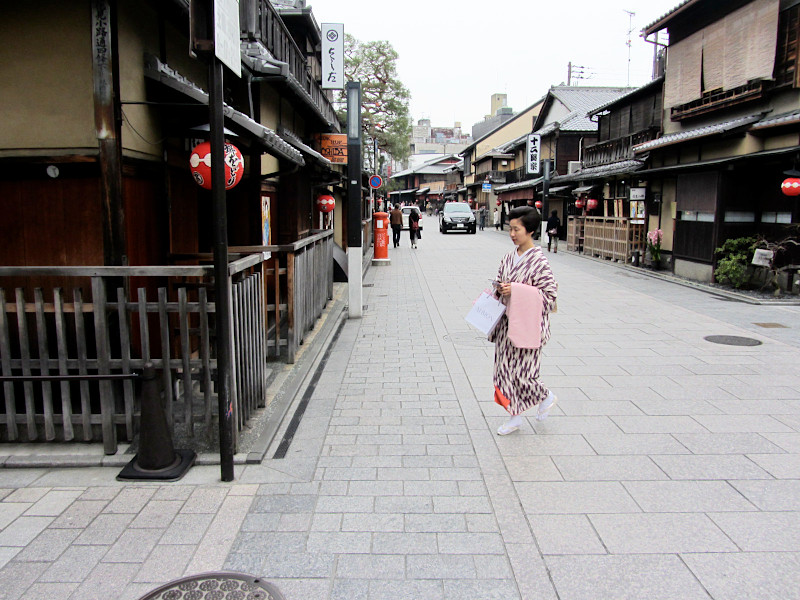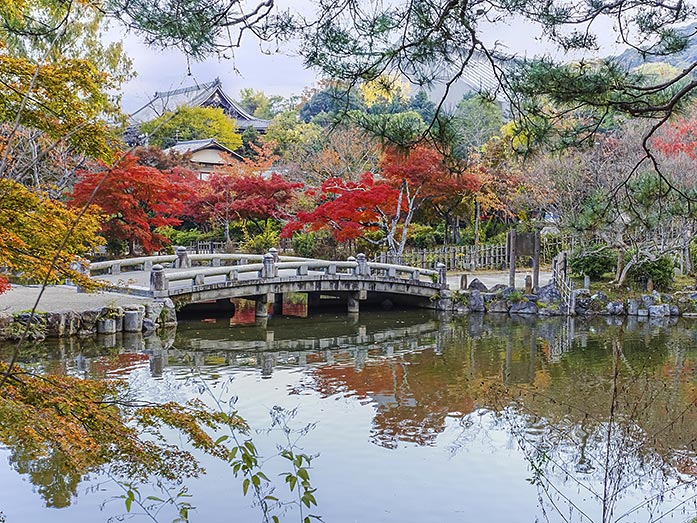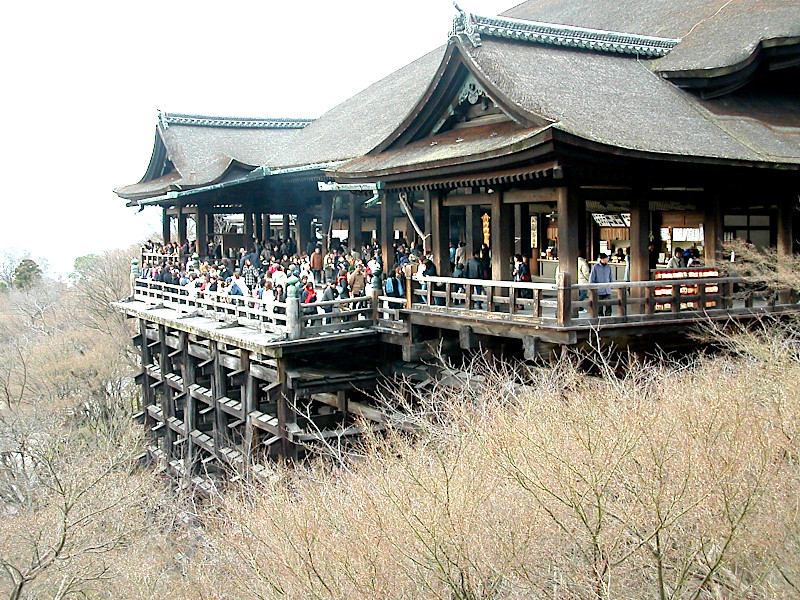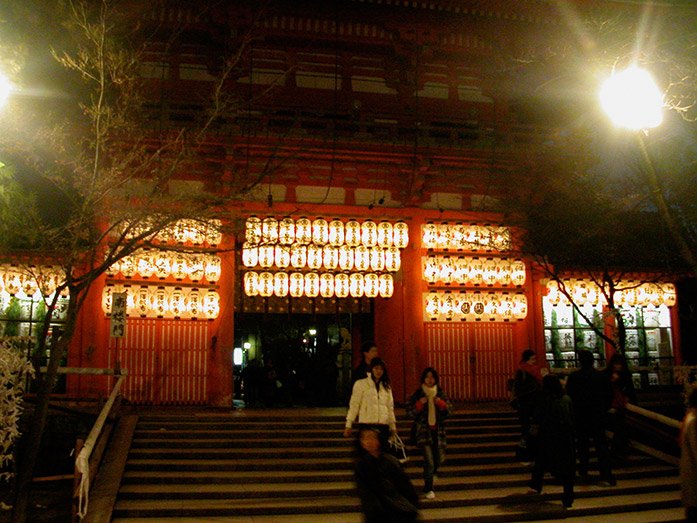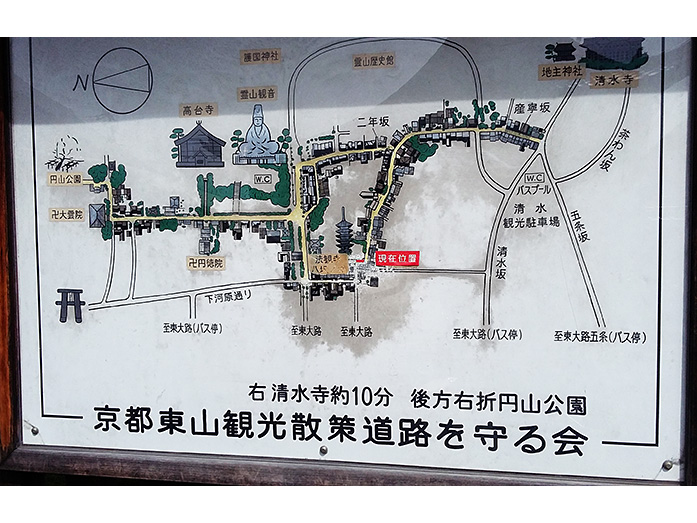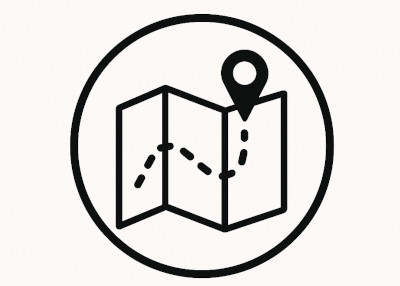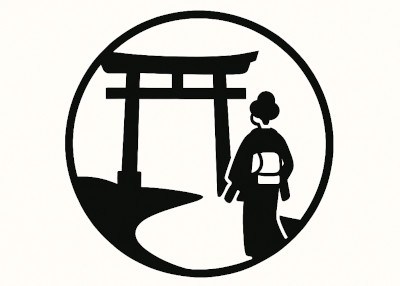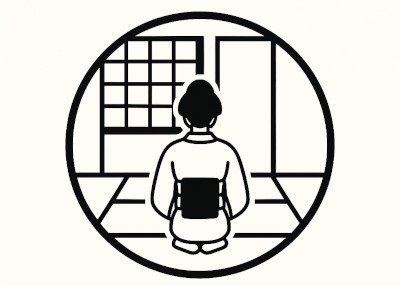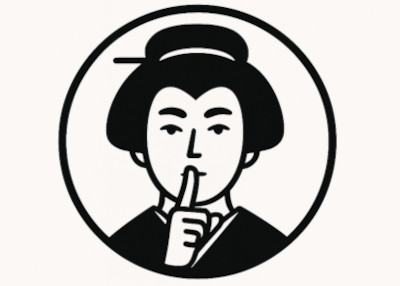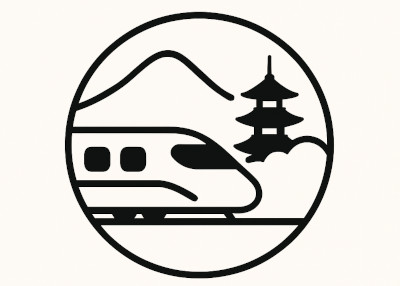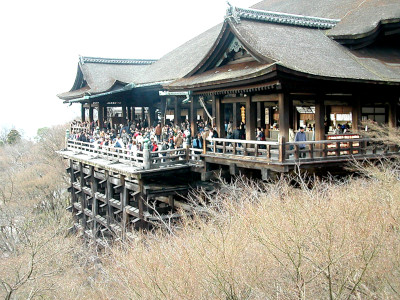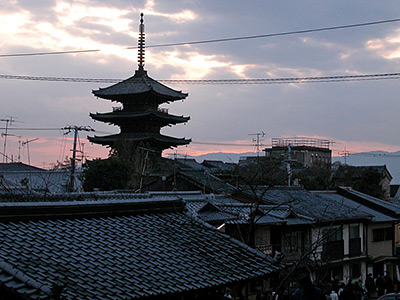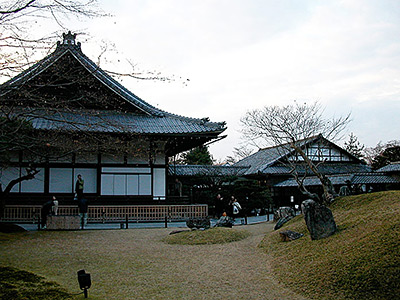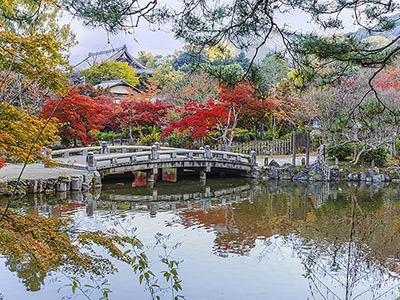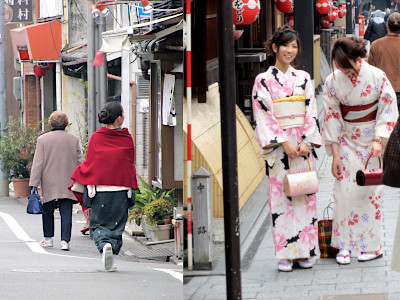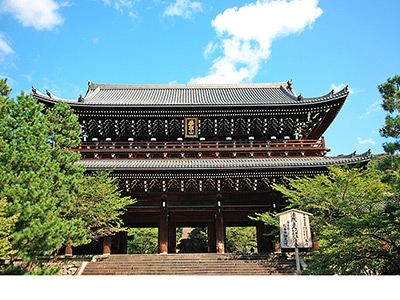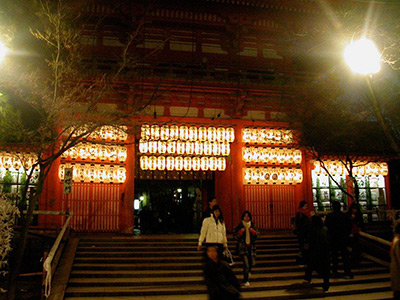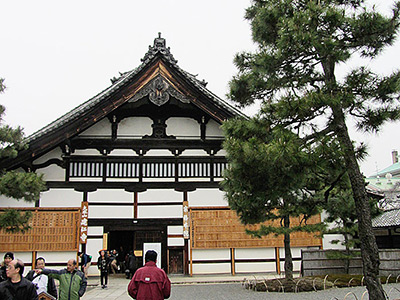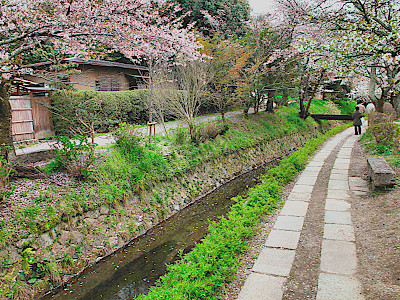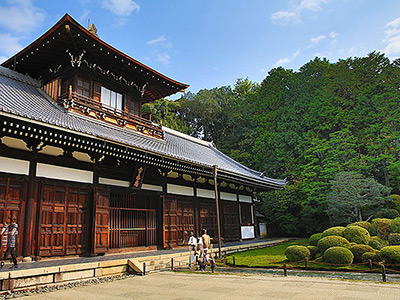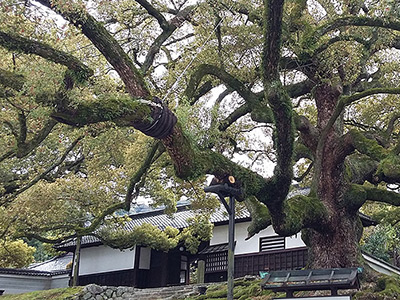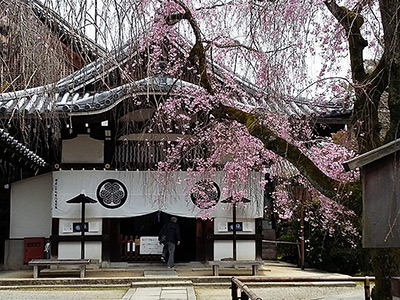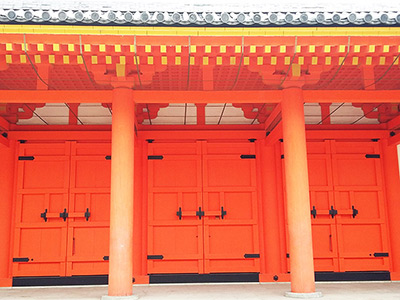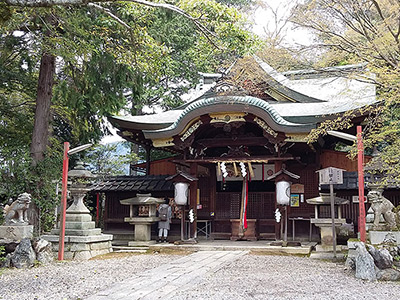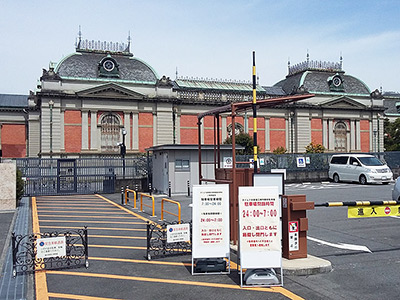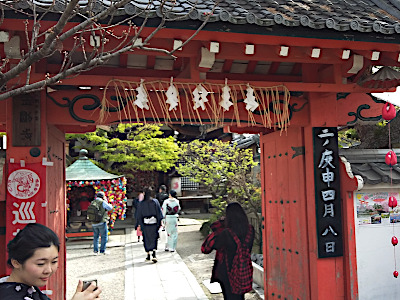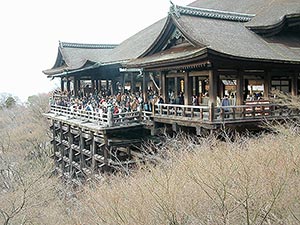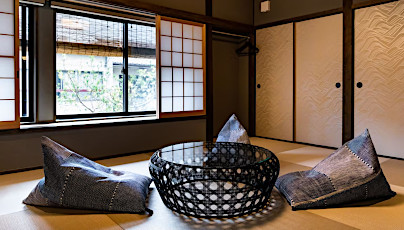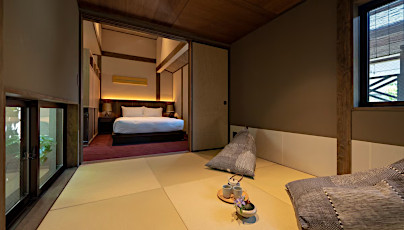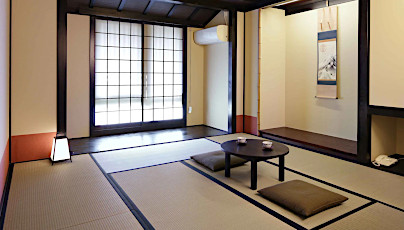Higashiyama District in Kyoto
This post can contain affiliate links, which means that we may receive a small commission if you make a purchase using these links.
Facts & Figures
Higashiyama District (one of Kyoto’s 11 districts) is the place to explore some of the most beautiful and popular sightseeing spots in the eastern part of Kyoto's city center. This is especially true of the area between Kiyomizu-dera Temple and Maruyama Park. Enjoy exploring the narrow lanes, traditional streets such as Ninenzaka and Sannenzaka, UNESCO World Heritage Sites, peaceful gardens, merchant shops, and preserved buildings like the old townhouses (Machiya). This whole scenery will bring you back to the atmosphere of the old Kyoto capital times.
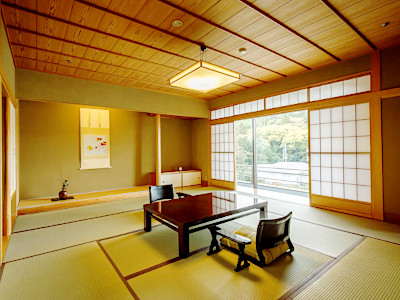 Best Places to Stay in Kyoto >
The city reinforced this impression by removing telephone poles and power lines that once cluttered the area. There are many must-see attractions such as Kiyomizu-dera Temple, Yasaka Pagoda, Kodai-ji Temple, Maruyama Park, Gion District (where you might spot geisha), Chion-in Temple, Yasaka Shrine, Kennin-ji Temple, Kyoto National Museum and much more. The rich cultural and historical heritage of this district attracts millions of tourists throughout the year. Most of them follow the district’s two-kilometer path to discover ancient Kyoto. My tip: To get the best views over Kyoto and the Higashiyama District, visit Shogunzuka Mound on top of Mount Higashiyama. The observation decks are especially popular at sunset.
Best Places to Stay in Kyoto >
The city reinforced this impression by removing telephone poles and power lines that once cluttered the area. There are many must-see attractions such as Kiyomizu-dera Temple, Yasaka Pagoda, Kodai-ji Temple, Maruyama Park, Gion District (where you might spot geisha), Chion-in Temple, Yasaka Shrine, Kennin-ji Temple, Kyoto National Museum and much more. The rich cultural and historical heritage of this district attracts millions of tourists throughout the year. Most of them follow the district’s two-kilometer path to discover ancient Kyoto. My tip: To get the best views over Kyoto and the Higashiyama District, visit Shogunzuka Mound on top of Mount Higashiyama. The observation decks are especially popular at sunset.
History
In 1929 the Higashiyama District was formed when this part was separated from Shimogyo-ku (district). The ward has been designated by the Japanese government as an "Important Preservation District for a Group of Historic Buildings". During the 14th century, the area became a popular location for large shrines, temples, gardens, and villas. Shogun Ashikaga Yoshimasa (1436 - 1490) created after his retirement in Kyoto the Higashiyama culture, a subset of Japanese culture with a strong influence by Zen Buddhism. His main focus was the development of the famous Japanese tea ceremony (Sado), Indian ink painting, and flower arrangements (Ikebana). A big role played also the concepts/aesthetics of Wabi-sabi. The former residence of the shogun - Ginkaku-ji - is now one of the main attractions in Kyoto and a UNESCO World Heritage Site. Higashiyama District has many restrictions on urban development, therefore the population is constantly declining. It has now out of all 11 districts in Kyoto the lowest number of people with a huge percentage of elderly citizens.
Location

Higashiyama District is located three kilometers northeast from the center of Kyoto and stretches north to south along the Higashiyama ridge.
How to get to Higashiyama?
- 10-15min from Kyoto Station to Higashiyama by bus nr. 100 or 206
Best Sightseeing spots within the Higashiyama District
1. Kiyomizu-dera Temple
Kiyomizu-dera or "Pure Water Temple" is one of the most famous and popular Buddhist temple in Japan. Kiyomizu-dera was founded in 778. The main hall with its wooden stage hovering 13 meters above ground is a masterpiece of Japanese temple architecture and a tourist hotspot. In 1994 the temple was added to the list of UNESCO World Heritage Sites.
Read More
2. Yasaka Pagoda
The oldest pagoda in Kyoto is with a height of 46m a landmark sign of the Higashiyama district. It is also the 3rd tallest wooden structure in Kyoto. The five-story pagoda with the temple treasure (Yasakato-ezu), a designated important cultural property, belongs to the last remaining parts of the Hokanji Temple.
Read More
3. Kodai-ji Temple
Kodai-ji Temple is one of the greatest Zen temples in Kyoto, located within the Higashiyama District. The temple is officially known as Kodaiji-jushozenji and belongs to the Rinzai Buddhist sect. It was established in 1606 to pay tribute to Toyotomi Hideyoshi (1537 - 1598), the warlord of the Sengoku era (1467 - 1568).
Read More
4. Maruyama Park
Maruyama Park or Maruyama Koen is the oldest public park in Kyoto and a nationally-designated Place of Scenic Beauty. The park is located near the Yasaka Shrine within the Higashiyama district at the eastern end of Gion. It is the most famous Hanami party spot for locals during the cherry blossom season and a must-see for every visitor to the city.
Read More
5. Gion District
The Gion district in Kyoto is renowned as the most famous Geisha district in Japan. Take a stroll along the traditional wooden machiya merchant houses and enjoy the Edo Times atmosphere. I highly recommend visiting this place. Certain parts of the area have been granted the status of a national historical preservation district.
Read More
6. Chion-in Temple
The Chion-in Temple in Kyoto is the head temple of the Jodo (Pure Land) sect of Japanese Buddhism. The sect has millions of followers and Chion-in is one of the most sacred and most popular temples in Japan. At the entrance, you will find there the Sanmon Gate (main gate). Sanmon is with a height of 24m and a width of 50m the largest temple gate in Japan.
Read More
7. Yasaka Shrine
The famous Yasaka Shrine, also known as Gion Shrine, is one of the most popular Shinto Shrines in Kyoto. The Shinto Shrine was founded in 656. Yasaka-jinja became the headquarters of over 2000 sub-shrines all over Japan with the same name and Susanoo-no-Mikoto shrines. Every evening hundreds of lanterns (sponsored by local businesses) get lit and create a unique atmosphere.
Read More
8. Kennin-ji Temple
Kennin-ji Temple was founded in 1202 by Shogun Minamoto Yoriie (1182 - 1204) upon the request of Emperor Tsuchimikado, the 83rd emperor of Japan (1196 - 1231). It is the oldest Zen temple in Kyoto with a beautiful Zen garden. The temple is part of the Five Great Zen Temples of Kyoto (Kyoto Gozan). Over the centuries the temple burned down many times and was rebuilt afterwards.
Read More
9. Philosopher's Walk
The Philosopher's Walk (Tetsugaku no Michi) is an app. 2km long pedestrian path in Kyoto alongside a branch of the Lake Biwa Canal. It is on my Most Popular Cherry Blossom Spots In Kyoto list the absolut number one. The Philosopher's Walk got its name from Nishida Kitaro (1870 - 1945), a Kyoto University professor and one of the most famous philosophers in Japan.
Read More
10. Tofukuji Temple
Tofuku-ji is one of the five great Zen temples of Kyoto, also known as Kyoto Gozan. This temple was established in 1236 by Kujo Michiie (1193-1252), who was an imperial chancellor and a prominent statesman during the Kamakura period (1185-1333). It took him 19 years to complete the construction of the temple buildings.
Read More
11. Shoren-in Temple
Shoren-in is the first out of five Monzeki Temples (Sanzen-in, Bishamon-do, Myoho-in, Manshu-in) of the Tendai sect in Kyoto. The sight of the huge more than 800-year-old camphor trees at the entrance of Shoren-in temple was really fascinating for me. Shoren-in is dating back to the late Heian period (794 - 1185). The temple is full of national treasures and important cultural assets.
Read More
12. Yogen-in Temple
The Yogen-in Temple, a Jodo Shinshu Kengo-in Buddhist temple in Kyoto, is famous for its main hall and the so-called blood ceiling. It is the blood of Mototada Ioni and other samurai warriors, who committed suicide at the end of an 11-day siege on the floor of Fushimi Castle in 1600. In 1594 the temple was established by Yodo-dono, concubine of shogun Hideyoshi Toyotomi (1536 - 1598), for the memorial service for her father Nagamasa Asai.
Read More
13. Sanjusangen-do Temple
The 120m long main temple hall is called Sanjusangen-do, which means a hall with thirty-three spaces between columns. It is the longest wooden building in Japan. The Japanese government registered Rengeo-in (official name) as a National Treasure. In 1164 Sanjusangen-do was built by Taira-no-Kiyomori (1118 – 1181), a powerful politician and warrior.
Read More
14. Awata-jinja Shrine
Awata-jinja Shrine is well-known for its annual lantern festival at the beginning of October called Awata Taisai. The shrine is located on top of a hill. From there, you have a great view of Kyoto. The beautiful and quiet shrine marked in the old days the starting point of the Tokai-do Road. The road connected Kyoto with Edo (Tokyo).
Read More
15. Kyoto National Museum
The Kyoto National Museum belongs to the top 4 national museums in Japan. The other 3 are the Nara National Museum, the Tokyo National Museum, and the Kyushu National Museum. The museum, one of the oldest in Japan, houses over 12000 art objects with a focus on pre-modern Japanese and Asian works. It was designed by the architect Katayama Tokumain (1854-1917).
Read More
16. Yasaka Koshindo Temple
Yasaka Koshindo Temple was built during the Heian period (794 - 1185). Its unique decoration of colorful balls, and a talisman called Kukurizaru, made this place really popular. It is one of the few remaining temples of Koshin-do in Japan. Monkeys belong to the Koshin faith and it is said that their spirit is protecting people and their homes from bad influences.
Read More
Festival & Events (dates can change without notice)
February
Setsubun (3rd)
One day before spring arrives (lunar calendar) the Setsubun is celebrated. Bean throwing (Mame maki) ceremonies are held at the shrine to get a good fortune for the year. Do not miss the bonfire on the evening.
March
Hanatoro (Early to Mid March)
There is a 10-day-long illumination event that takes place in Kyoto's Higashiyama District in March and Arashiyama in December. Known as "Flower and Light Road", this event features thousands of small lanterns displayed on the roadside and around local temples. Many of these temples extend their opening hours for the event. The illuminations start at 6:00 pm and continue until 9:30 pm.
April
Miyako Odori (1st - 31th)
The traditional annual spring dance of the Kyoto district Gion Kobu performed by Geiko and Maiko is a must-see on your Kyoto visit. Don't miss the most popular dances the Miyako Odori "Cherry Blossom Dances" or "Dances of the Old Capital" at the Gion Kobu Kaburenjo Theater (located close to Gion Corner).
May
Ochatsubo Dochu (1st)
The Ochatsubo Dochu or Traveling Tea Canisters festival dates back to the Edo Period. It represents the practice of showing the new tea harvest from Uji to the ruling shogun in the old days. Now during the parade large ceramic containers with tea are carried by people wearing traditional costumes from Kenninji Temple to Yasaka Shrine.
Aoi Matsuri (15th)
The highlight of this festival is a large parade from Imperial Palace through Shimogamo Shrine to the Kamigamo Shrine. More than 500 people wearing aristocratic costumes from the Heian Period (794 - 1185). The Aoi Matsuri belongs with the Gion Matsuri and Jidai Matsuri to the three most famous festivals in Kyoto.
July
Gion Matsuri (whole month)
The month July is full of different events like the Yoiyama - Kyoto's Magical Night (locals in kimonos look at the giant Gion floats the day before the parade) or the famous Yamaboko Junko (float procession on the 17th of July).
October
Jidai Matsuri ("Festival of Ages") (22nd)
People celebrate with a large parade between Imperial Palace to Heian Shrine the anniversary of the foundation of Kyoto. App. 2000 participants wearing historical costumes from different time periods. Enjoy this great festival which last around 2 hours.
November
Shichi-Go-San (15th)
The well-being and growth of young children is celebrated at the shrine and in the rest of Japan.
Where to stay in Kyoto?
Book your Flight Tickets and Rental Car for your Japan trip
Day trips from Kyoto:
Travelers who viewed Higashiyama District viewed also:
Top rated - Best Machiya Houses in Kyoto
THE MACHIYA Ebisuya, 192 Ebisuya-cho Shimogyo-ku, Kyoto 600-8062
This 3-star guesthouse got an excellent rating. All 30 individually furnished rooms offer free WiFi, air conditioning, bathrooms incl. toilets, fridges, 40-inch flat-screen TVs, and more. THE MACHIYA Ebisuya is located in central Kyoto.
View on Expedia.com
This 3-star guesthouse got an excellent rating. All 30 individually furnished rooms offer free WiFi, air conditioning, bathrooms incl. toilets, fridges, 40-inch flat-screen TVs, and more. THE MACHIYA Ebisuya is located in central Kyoto.
View on Expedia.com
The Machiya Kazahaya, 570-6 Kazahayacho, Shimogyo-ku, Kyoto, Kyoto, 600-8475
The Machiya Kazahaya offers for all guest rooms free WiFi, air conditioning, safes, bathrooms with toilets, refrigerators, and much more. Enjoy also the beautiful Japanese Garden. Guests gave this property the rating - Exceptional.
View on Expedia.com
The Machiya Kazahaya offers for all guest rooms free WiFi, air conditioning, safes, bathrooms with toilets, refrigerators, and much more. Enjoy also the beautiful Japanese Garden. Guests gave this property the rating - Exceptional.
View on Expedia.com
Kyomachiya Ryokan Sakura Urushitei, 425 Kichimonjicho, Shimogyo-ku, Kyoto, 600-8069
This beautiful 3-star guesthouse offers 32 rooms with free WiFi, air conditioning, bathrooms incl. showers and toilets, refrigerators, and much more. Enjoy also the relaxing indoor public bath (no minerals). Guests gave this property the rating - Wonderful.
View on Expedia.com
This beautiful 3-star guesthouse offers 32 rooms with free WiFi, air conditioning, bathrooms incl. showers and toilets, refrigerators, and much more. Enjoy also the relaxing indoor public bath (no minerals). Guests gave this property the rating - Wonderful.
View on Expedia.com

